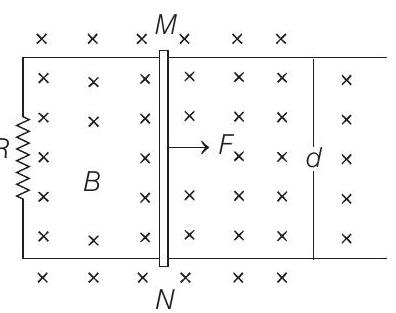Electromagnetic Induction and Alternating Current 7 Question 29
####32. Two long parallel horizontal rails, a distance
 along the rails without friction (see figure). There is a uniform magnetic field of induction
along the rails without friction (see figure). There is a uniform magnetic field of induction
Find the velocity of the rod and the applied force
Show Answer
Answer:
Correct Answer: 32.
Solution:
- Total resistance of the circuit as function of distance
Let
Net force on the rod,
but
This net force is equal to






